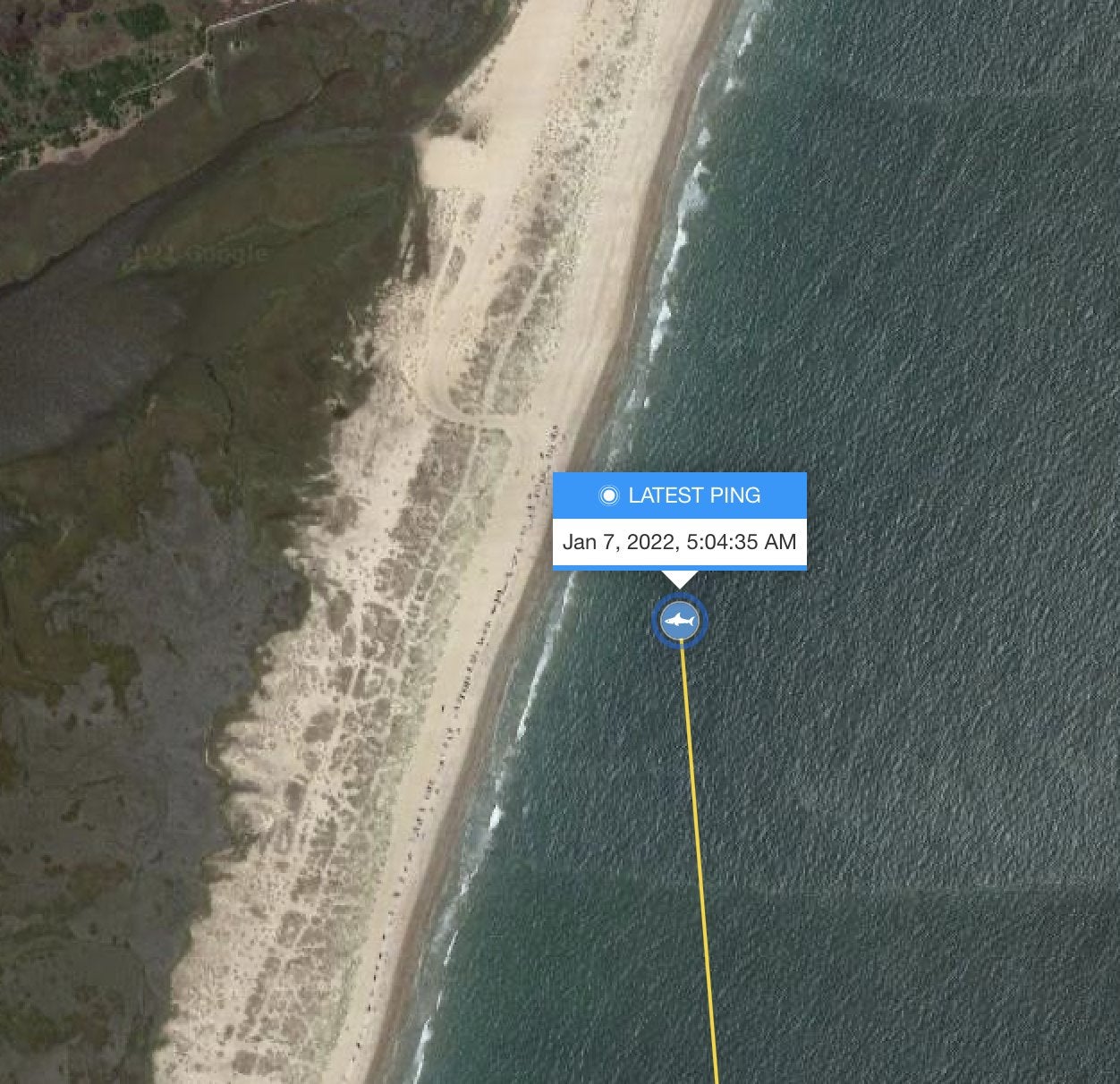Huge great white shark dubbed ‘Jumbo Jaws’ spotted in shallow waters
Mahone is 13.7ft in length and weighs 1,701 pounds, according to scientists

Your support helps us to tell the story
From reproductive rights to climate change to Big Tech, The Independent is on the ground when the story is developing. Whether it's investigating the financials of Elon Musk's pro-Trump PAC or producing our latest documentary, 'The A Word', which shines a light on the American women fighting for reproductive rights, we know how important it is to parse out the facts from the messaging.
At such a critical moment in US history, we need reporters on the ground. Your donation allows us to keep sending journalists to speak to both sides of the story.
The Independent is trusted by Americans across the entire political spectrum. And unlike many other quality news outlets, we choose not to lock Americans out of our reporting and analysis with paywalls. We believe quality journalism should be available to everyone, paid for by those who can afford it.
Your support makes all the difference.A massive great white shark that measures 13.7ft in length and weighs in at 1,701 pounds was spotted swimming in the waters off North Carolina.
The huge shark, which is named Mahone, was recently pinged by researchers in the waters off the state’s coastline.
The shark, which is the largest ever tagged by ocean research agency OCEARCH in Canadian waters, has been tracked up and down the East Coast.
He was one of three great white sharks who were pinged by transmitters in the area in April.
These also included Ulysses, a 12-foot, 990 pound shark who was detected off the coast on 6 April; and Tancook, a 10ft, 715 pound shark that was pinged on 9 April.
Researchers use transmitters that release a signal when the sharks spend enough time near the surface of the ocean for it to be picked up by satellites
OCEARCH, which was established in 2007, collects data that scientists use to track ocean life and has tagged more than 400 animals, including the great white sharks, tiger sharks and loggerhead sea turtles
Mahone is named after Mahone Bay in Nova Scotia, Canada, where he was tagged in 2020.

The data shows that Mahone has traveled 9,241 miles in 335 days up and down the East Coast, as far south as Orlando and north to the Gulf of St Lawrence off Prince Edward Island.
OCEARCH scientists place the tags on sharks’ dorsal fins, but the number of pings they make depends on the individual shark.
“Some sharks are total pingers and we hear from them every couple weeks,” said OCEARCH spokesperson Paige Finney.
“Some we don’t hear from for months. They’re fish. They don’t need to come to the surface.”
In 2012 they launched a Global Shark Tracker where the animals location can be seen immediately on a map.
Each tag lasts for around five years before the battery in it dies and it stops pinging.
OCEARCH has tagged 84 sharks in the last 10 years in the US and Canada.
“Really we’ve been able to understand where they’re moving, when they’re moving and, in a lot of cases, why they’re moving,” added Ms Finney.
“A lot of that wasn’t known until we started bringing expeditions to this region.”
During a recent expedition the group tagged a 10ft long, 460 pound juvenile great white shark called Crystal, which has a life expectancy of around 70 years.


Join our commenting forum
Join thought-provoking conversations, follow other Independent readers and see their replies
0Comments